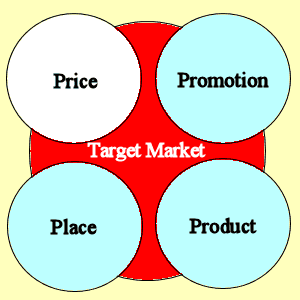Now that you have a product to sell, the next problem is what price are you going to sell it for? There are many factors to consider when deciding on a price for a product but the most important factor is the willingness of the customer to buy the product for a certain amount.
Although competing on price is as old as mankind, the consumer is often still sensitive for price discounts and special offers. Price has also an irrational side; something that is expensive must be good. Let’s discuss the four main policies or strategies in putting a price on a product. Another important factor is that you want your customer to choose you based on value, let others race to the bottom in a price war.
PREMIUM PRICING
Use a high price when there is something unique about your product or service. This strategy is used where you have a substantial competitive advantage. Such high prices are charged for luxuries such as traveling in a private jet or taking a vacation at the Atlantis Resort in the Bahamas.
PENETRATION PRICING
The price charged for products and services is set artificially low in order to gain market share. Once this is achieved, the price is increased.
ECONOMY PRICING
This is a no frills low price. The cost of the marketing and manufacturing are kept at a minimum. Supermarkets often have economy brands for soaps, canned goods, etc.
PRICE SKIMMING
Charge a high price because you have a substantial competitive advantage. However, the advantage is not sustainable. The high price tends to attract new competitors into the market, and the price inevitably falls due to increased supply. For example, a company introduced an environmentally sustainable plastic. The company will sell the plastic at a high price, for which other companies will eventually produce the plastic. By the time there are other companies producing the plastic, the original producer will decrease its price and others will eventually follow. This is also known as “stair step.”

Marketing Mix- Price
Determining a price for a product is not limited on those strategies alone. There are still other policies/strategies that can be used to price a product:
PSYCHOLOGICAL PRICING
This strategy is used when the marketer wants the consumer to respond on an emotional, rather than rational basis. For example, when a container of cleaning spray is priced at $2.99 rather than $3.00. The penny “lost” is made up quickly with volume as people see the two dollars and miss that it really is three dollars.
PRODUCT LINE PRICING
Where there is a range of products or services the pricing reflect the benefits of parts of the range. For example a beauty salon, a basic manicure could be $10.00, basic manicure with high-end nail polish $13.00 and basic manicure with hi-end nail polish and 15 minute hand massage $15.00.
OPTIONAL PRODUCT PRICING
Companies will attempt to increase the amount customers spend once they start to buy. Optional extras increase the overall price of the product or service. For example movie houses will charge for optional extras such as guaranteeing a seat of your choice. These “upsells” increase the total profit on the sale drastically as the initial sale already covered your fixed costs.
CAPTIVE PRODUCT PRICING
Where products have complements, companies will charge a premium price where the consumer is captured. For example Gillette will charge a low price for its MACH 3 starter packs and recoup its margin from the sale of the MACH 3 disposable blades (regular and Turbo).
PRODUCT BUNDLE PRICING
Here sellers combine several products in the same package. This also serves to move old stock. For example a supermarket can bundle a shampoo, conditioner and hair serum (old stock).
PROMOTIONAL PRICING
Pricing to promote a product is a very common strategy. For example a three pack of chocolate pudding Jell-O for $2.87, and then you will get a cup of their Cinnamon Roll Jell-O Pudding (new product) for free.
GEOGRAPHICAL PRICING
Geographical pricing is evident where there are variations in price in different parts of the world. For example strawberries when in season can cost $12.00 in California while when you buy the same strawberries in New York it will cost you $15.00. Cost differences can be attributed to affluence level of the customer, overhead costs, shipping, and may other factors.
VALUE PRICING
This strategy is used where external factors such as recession or increased competition force companies to provide “value” products and services to retain sales. A great example for this strategy is the value meals at McDonald’s. (Though the value meal now seems to eat more money out of your wallet than it used to.)
With so many ways to price your product or service, which would you choose? I suggest to differentiate yourself from your competition.
How Much Is It?
Samuel Carrara




Pingback: Working at Home Blog-154th Edition
PSYCHOLOGICAL PRICING is very interesting thing in the marketing.It is nice to know the importance of pricing in marketing. i will share this with all my friends.Can you suggest an example for penetration pricing?
In my point of view,price war is an important thing in the marketing.Whatever others’ policy,we should have our own policy. This post states about the different levels of pricing